Preserving your social life and protecting your mental health are key to living well with vision loss
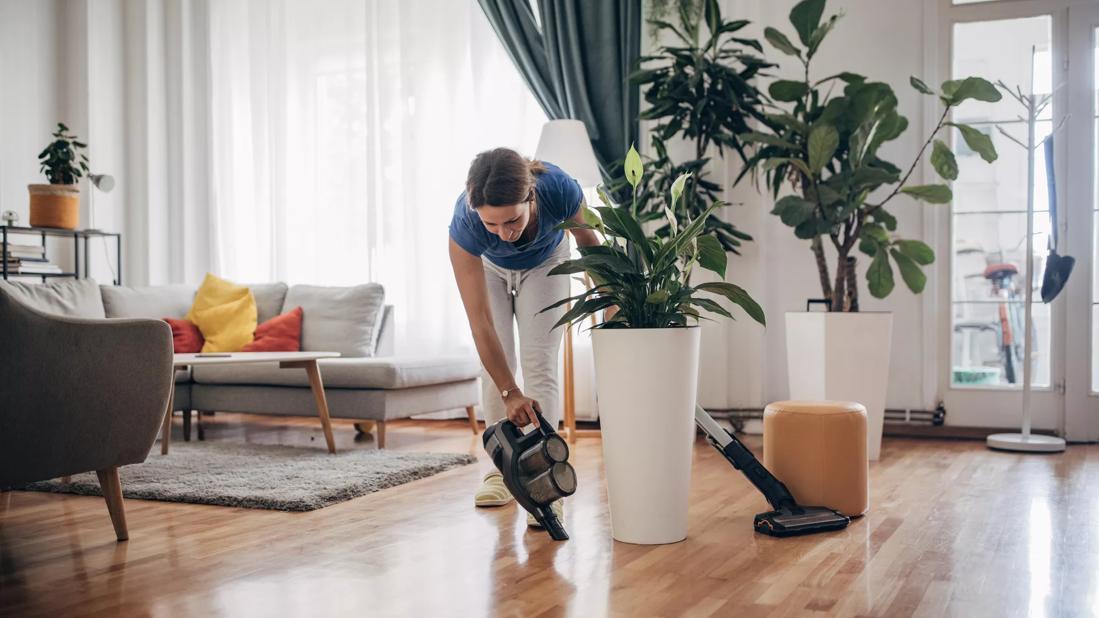
Geographic atrophy (GA) is the final stage of dry age-related macular degeneration (AMD), the most common cause of vision loss in people over 60 years old.
Advertisement
Cleveland Clinic is a non-profit academic medical center. Advertising on our site helps support our mission. We do not endorse non-Cleveland Clinic products or services. Policy
Dry AMD happens when the part of your retina that handles detailed, central vision — the macula — forms yellow protein deposits called drusen, which dry and thin the macula. Geographic atrophy can develop in one or both eyes. While severe cases can involve total central vision loss, people living with the condition do retain their peripheral vision.
Ophthalmologist and retina specialist Ananth Sastry, MD, says that the fact that geographic atrophy doesn’t cause total blindness doesn’t make it any less debilitating — or the impact on a person’s daily life any less traumatic. He shares five tips for coping with the physical and psychological impact of GA.
“A person with geographic atrophy may observe that things in the center of their vision start to become blurred,” Dr. Sastry explains. “When the atrophied area becomes large enough, they might notice a blind spot in the center of their vision. It can get progressively larger, making things very hazy, or completely absent.”
While geographic atrophy only affects central vision, Dr. Sastry is quick to note that most of the things we do in a day require central vision.
“Visual tasks that require central vision, like reading, viewing a television or computer screen and driving may become progressively more challenging over time. It’s often difficult to discern facial features or, for example, see a clock on the wall,” he elaborates. “Advanced geographic atrophy that affects both eyes can significantly affect a person's life and their activities.”
Advertisement
Make no mistake: Vision loss is loss. And it’s healthy to grieve that loss. The process of moving forward can be physically, mentally and emotionally taxing — and may require some significant lifestyle changes. But coming to terms with (and learning to thrive despite) your visual impairment isn’t something you have to do alone.
Dr. Sastry recommends implementing the following five things to help adapt to life with vision loss caused by geographic atrophy.
Whenever Dr. Sastry diagnoses somebody with advanced macular degeneration, he refers them to a low-vision specialist or rehabilitation team. He says that working with these skilled providers can be a real game changer.
Low-vision specialists help people with all kinds of visual impairments do three things:
A low-vision specialist will assess your level of impairment and recommend different tools to help you regain function. In some cases, that means getting occupational therapy, joining a class or participating in a low-vision support group. In other cases, it’s all about prescribing low-vision assistive devices and getting you connected to service providers.
Their recommendations and support will be tailored to your personal needs and circumstances.
Counseling not really your thing? Not really jazzed about seeing a mobility specialist? We get it. But Dr. Sastry maintains that seeing a low-vision specialist is a hassle worth going through.
That’s because central vision isn’t just something we use for “daily functioning,” which sounds terribly dull. It also enables you to participate in hobbies and continue developing interests that usually require central vision. Whether you’re a bookworm, a bowler, a birder, a crafter, a carpenter or a cook, you’re relying on your central vision to do the things you love.
“Seeing a low-vision specialist may allow someone to retain the ability to do some of their favorite recreational activities — or at least do them for a while longer” Dr. Sastry notes.
There’s no place like home. But if you’re living with geographic atrophy, home can also be hazardous. Dr. Sastry recommends working with your low-vision specialist to determine which home modifications will allow you to maintain your independence. A few recommendations include:
Advertisement
While it’s possible to drive during the early stages of macular degeneration, by the time a person’s vision loss has progressed to the point of a geographic atrophy diagnosis, it’s usually off the table. If you’re not sure whether or not driving is still safe, speak with your retina or low-vision specialist.
Dr. Sastry understands that losing the ability to drive can be a big blow. But adds that — even if you don’t live in an area with public transportation — there are options that can help you preserve your independence.
“This is an instance in which, fortunately, technology has provided a lot of assistance,” he says. “Rideshare services have become ubiquitous throughout much of the country and have been very helpful to people with vision loss. There are also additional services like grocery and pharmacy delivery services.”
Depending on where you live, there may also be services available specifically tailored to the needs of people with visual impairments. That’s just one of many reasons it’s a good idea to get (and stay) connected with other people after your diagnosis.
Dr. Sastry believes that staying active and involved in your community is critical for people living with geographic atrophy.
Advertisement
“People living with significant visual impairment often feel very isolated, especially when they get older,” he explains. “They don’t feel like going out or they don’t think they have the ability to go out.”
This is a major concern in the GA community. According to the 2022 Geographic Atrophy Insights Survey, one-third of all respondents had recently withdrawn from their social lives because of their disease. The resulting loneliness can quickly devolve into depression and anxiety.
“Maintaining a social life is absolutely critical, not just to mental health, but to general health as well,” Dr. Sastry adds. A 2008 study explains it like this: People who have both AMD and depression have two different kinds of disability that magnify each other’s impact. That’s why protecting your mental health is as important for your body as it is for your brain.
A lot of people struggle with the whole “asking for help” thing under the best of circumstances. So, it’s no wonder that getting a new diagnosis and adjusting to life with a new physical impairment can leave people feeling vulnerable.
But Dr. Sastry urges you to reach out — to your providers, your community and your loved ones — when you need support. Vision loss is undeniably difficult. But people with blindness and low vision have worked hard to build a supportive community that you can tap into wherever you are.
Advertisement
Again, we understand that many people may struggle with asking for help. Getting a new diagnosis and adjusting to life with a new physical impairment can leave people feeling vulnerable.
But again, too, Dr. Sastry urges you to reach out when you need support.
“It can sometimes feel like you’re the only one who has geographic atrophy,” he says. “But that’s absolutely not true. There are many, many people who are going through the same thing. And there are many, many people who want to help.”
Learn more about our editorial process.
Advertisement

Having a first-degree biological relative with this eye condition raises your risk, but other factors are at play, too
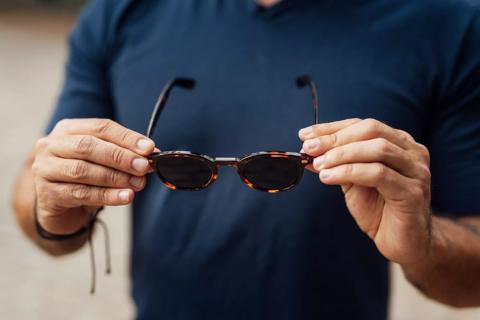
Start low-vision rehabilitation as soon as possible and see your retina specialist at least every six months
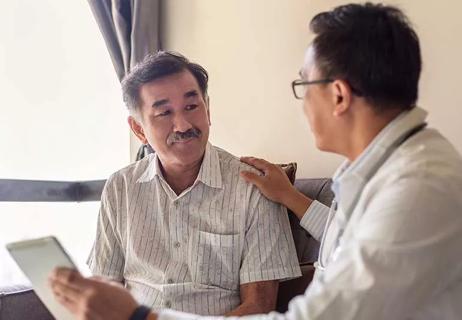
Getting connected to the right healthcare providers can make a big difference
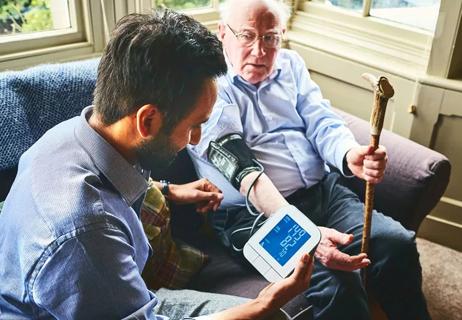
Taking care of yourself helps you take care of your loved one
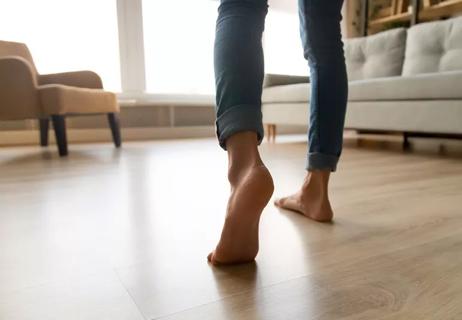
Installing grab bars and taping down area rugs may make navigating life with vision loss easier

Eating a balanced diet can help protect your eyes and may prevent AMD from progressing

They may help, but it depends on factors like the stage of your disease

A low-vision evaluation can help identify your best options

Start having sex about 72 hours before ovulation, then at least every other day during your fertile window

Attachment theory suggests that your earliest relationships shape connections throughout your life

It isn’t a recognized mental health disorder, but research shows that problematic social media use can negatively affect your mental health, self-esteem and sleep